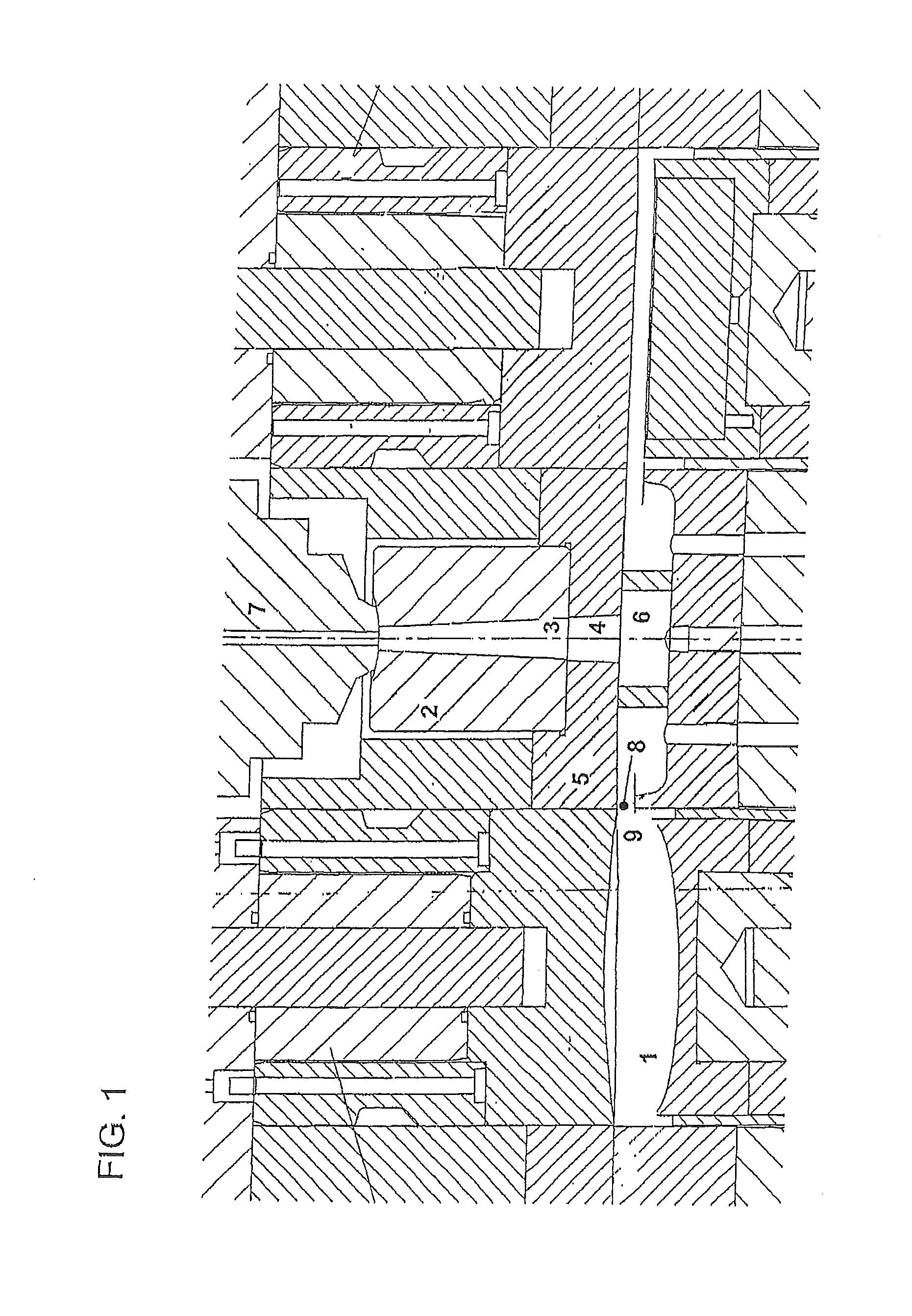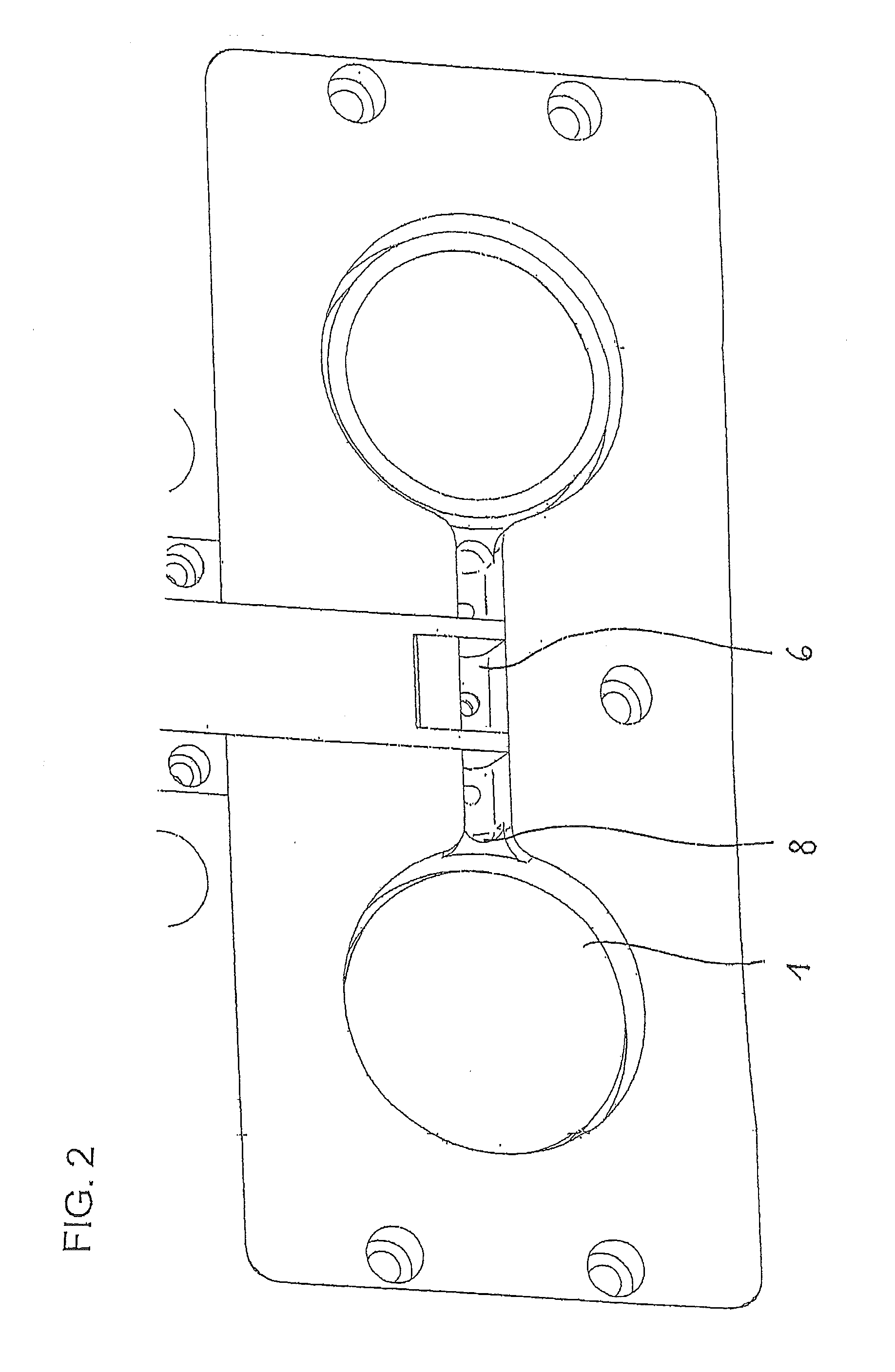Process and apparatus for producing thick-walled plastic components
a technology of plastic components and processing equipment, applied in auxillary shaping equipment, instruments, applications, etc., can solve problems such as inability to produce large gates, voids or warpages, and sink marks, and achieve the effect of not being able to produce large gates at all
- Summary
- Abstract
- Description
- Claims
- Application Information
AI Technical Summary
Benefits of technology
Problems solved by technology
Method used
Image
Examples
Embodiment Construction
[0008]An embodiment of the present invention is a process for producing a plastic component, comprising injecting plastic melt via a sprue (3, 4, 6, 8) into a cavity (1) of a moulding tool that shapes said plastic component and packing additional plastic melt into said cavity via holding pressure (1) for the purpose of compensating for a volume contraction of the injected plastic melt due to cooling, wherein said plastic melt located in said sprue (3, 4, 6, 8) is kept flowable by means of energy introduced in the region of said sprue for such time until the solidification of any molten plastic in the core of said plastic component.
[0009]Another embodiment of the present invention is the above process, wherein said plastic component is an optical lense or an optical lightguide.
[0010]Another embodiment of the present invention is the above process, wherein said energy is introduced by means of emission of ultrasonic waves directed onto said sprue.
[0011]Another embodiment of the presen...
PUM
| Property | Measurement | Unit |
|---|---|---|
| thicknesses | aaaaa | aaaaa |
| volume | aaaaa | aaaaa |
| energy | aaaaa | aaaaa |
Abstract
Description
Claims
Application Information
 Login to View More
Login to View More - R&D
- Intellectual Property
- Life Sciences
- Materials
- Tech Scout
- Unparalleled Data Quality
- Higher Quality Content
- 60% Fewer Hallucinations
Browse by: Latest US Patents, China's latest patents, Technical Efficacy Thesaurus, Application Domain, Technology Topic, Popular Technical Reports.
© 2025 PatSnap. All rights reserved.Legal|Privacy policy|Modern Slavery Act Transparency Statement|Sitemap|About US| Contact US: help@patsnap.com



